Stories from the Hood, Part One – The Olden Days
This is the first blog in a series of stories about my house and neighborhood in Denver, Colorado. The accounts of past events start with some of the more colorful aspects of the neighborhood’s history, setting the tone for the anecdotes that follow in the series. The writing style I employ is one with dangling participles and story lines that apparently lead nowhere… like my life. There is research of all sorts behind the long and short of it but no footnotes, and at times the storytelling reads like fractured fairy tales. Somewhere in the kernel of it all, are the narratives behind a gargoyle, a flag, Spiderman, murals and the evolution of my house into a neighborhood attraction. Perhaps when this series is complete, you will come to know my house as an old friend and stop by to see the public art that surrounds it.
Stories from the Hood
Provenance
The Olden Days
Chapter One

LoHi (Lower Highlands) has been a vibrant and colorful part of north Denver’s history beginning in the late 1880’s. In its early days, it was a comfortable neighborhood of small brick and wood-frame bungalows, built closely together. The area had rich, fertile soil from the Platte River. The bountiful vegetable gardens fed families year round and the vegetables provided a source of income from sales in the streets of downtown Denver. An array of community oriented businesses emerged with groceries, taverns, barbershops, drugstores, and bakeries that dotted the corners everywhere. Business was as much a source of socializing as service. Horse-drawn wagons transported people and goods. The railroad yards employed most of the males and was within walking distance. After a hard day’s work, families were together, drank hard, made merry, and filled the air with laughter. This was an area full of vibrant life. Everyone knew each other and there were no fences. But creating a niche for the Italian community to survive was not all roses.
The Italian immigrants who founded north Denver came over on crowded, vermin infested boats to the fabled Land of Promise and as soon as they stepped onto American soil, they were faced with prejudice. They were looked down on and called derogatory names because they were dark, uneducated, and spoke a strange language. They were forced to live in unbelievable poverty. Illness, child mortality, homelessness, and hunger were prevalent. They were slow to Americanize. This neighborhood supported four Italian language newspapers. Why should they learn English? Neighbors, priests, nuns, and their fellow workers all spoke Italian. They had their own “societies” which functioned as credit unions to borrow money for business needs, such as barber tools, shoe repair equipment, or a vegetable wagon. They took care of their own and outside of their own tight community, it was a strange and unfriendly world. In the 20’s and 30’s when the Ku Klux Klan began rapid growth in Colorado, the Italians were a natural target and looked after their own.
My house sits right next to the historic Our Lady of Mount Carmel Church. Our Lady of Mount Carmel was originally built by the Italians in 1894. In 1898, it was burnt down by arson and rebuilt into its present state as one of Denver’s finest examples of “Roman” architecture with its twin copper domes. The Irish had established themselves here ten years earlier when they built Saint Patrick’s Church. The two churches are situated only blocks apart.
The Italians and the Irish did not mesh well as each thought their version of Catholicism superior. They were both a rough lot and their relationship with the police was a turbulent one. Ultimately the Italian culture ruled as we can see in the marks they left with their churches, restaurants, schools; and by the 1920’s and 30’s, the Mafia. Mount Carmel Church is still active with mostly an elderly congregation and frequent funerals. Saint Patrick’s is now mostly a quiet nunnery. It was not always that way.

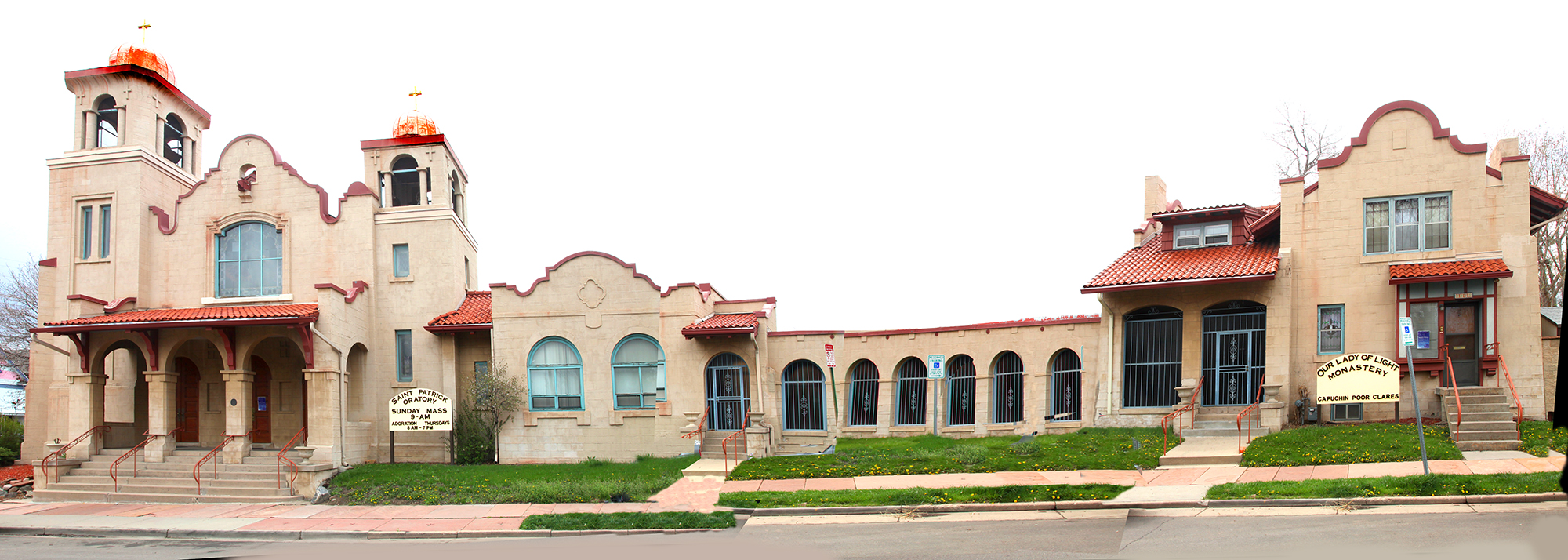
The first Italian priest in the neighboring Mount Carmel Church was Father Felix Lepore. Legend has it, by every account, that he was an extremely handsome man with dark, curly hair. As is often the case, he made for good daydream fodder during long sermons. It was said that he had a special charisma that attracted women. Many of his fellow Italians accused him of base morality and many a man forbade their wives and daughters to speak to him. Although he had a solid army of enemies, he also had a host of followers who had implicit faith in him.
Lepore must have been an interesting man; one who earned his controversy. On the side, Father Lepore was an inventor who had a number of patents on his inventions. Most of these innovative contraptions were consistent with his interest to help mankind in humanistic ways such as saving lives or aiding the helpless. They are said to have come to him in visions and nightmares. One such invention was a fire escape ladder which operated on a drum from which a wire ladder was wound. It lowered the body by itself and had a brake and children could be attached and lowered without assistance. Another was a hospital cot that could lift and move patients. He invented an automatic railroad switch and a needle that could be threaded by people with feeble vision. He also invented a life-saving suit for people to use if they were shipwrecked at sea. At the time of his death, he was working on a flying machine that he had invested much time and money on. He was so convinced of its success that he had already entered it in the St. Louis World’s Fair.
In 1903, while the 35-year-old priest was in the church sanctuary, he was shot twice in the abdomen and once in the face by Joseph Sorice. Father Lepore managed to get his assailant’s gun and shoot him once in the abdomen. They were both taken to the hospital in critical condition and both died the next day. During their overnight at the hospital, they were completely tight-lipped with the police and the truth of what happened was buried with their bodies.
Mount Carmel’s current priest, Father Hugh, likes to tell me they had an argument over a card game in the sanctuary on that infamous day. It was quite possible as Sorice was a professional gambler and made a practice of cheating at cards. He was so good at it that he was able to support himself in comparative luxury. Father Lepore liked to play cards for money, especially “Three Sevens”. Sorice was especially adept at this game and probably got caught cheating. Another story suggests the shooting was an assassination sentence carried out by the Mafia for a loan the priest had defaulted on and that this was Sorice’s mission in coming to Denver. Both of these theories could well be true. However, my favorite speculation involves Father Lepore’s scandalous sexual activity with the assailant’s sister and retribution over the loss of a maiden’s honor – “criminal intimacy with the women of the Mt. Carmel flock”, as a turn-of-the-century Colorado newspaper put it.
Lepore left an estate worth $20,000. Four years after his death, to everyone’s surprise, out of nowhere, a previously unknown wife and son appeared. Despite the lack of DNA testing at the time, she was able to present a convincing case and successfully received a chunk of his estate. His reputation lives on a century and a half later in Denver legend and in my heart. (More on Father Lepore to come in part six of this series.)
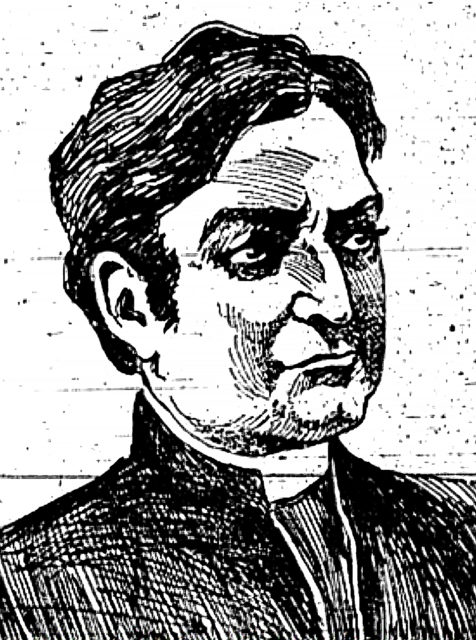

Another of my very favorite characters from the history of the hood is Mother Cabrini. She was a very resourceful and creative nun who came over from Italy in the 1890’s and was Father Lepore’s cohort in establishing the Mount Carmel Church. A shrine/nunnery/tourist attraction/resort is dedicated to her adjacent to Buffalo Bill’s grave by Lookout Mountain in Golden. In 1912, Mother Cabrini acquired this piece of desolate land for 50¢ an acre because it had no water. After purchasing the property, God led her to a rock and told her to hit it with her walking stick. As she so did, water sprung forth. The nunnery thrived and people flocked to get jugs of this holy water for its miraculous properties. Tourists can still buy little bottles of this wondrous liquid in the gift shop. (Unfortunately in 2004, the holy water became secular when the shrine hooked up to the municipal city water system.)
Mother Cabrini lived in my neighborhood and based herself out of the church next door. At that time, America was not “full” yet and the nation was flooded with Italian immigrants who were living in great poverty. Mother Cabrini wrote back to Italy at the time, “People here value a mule more than an Italian.” She dedicated her life to helping these immigrants; in fact, in 1950 she was bestowed the title Patroness of Immigrants by the Pope. Back in 1904 she opened a neighborhood orphanage called the Queen of Heaven Orphanage – which at its peak, housed 160 orphans. She died in 1917 while preparing Christmas candy for hungry children. It is said that proof of her sainthood is in her miraculous and hermetic body that never rotted. 21 years after her death, the church exhumed her from her case for “beatification”; having little to do with cosmetic enhancement, this rite acknowledges one for a bona fide miracle and the church intercedes with God for their entry into heaven. After all those years, her dead body passed the test by restoring sight to a one-day-old blind child and healing his dis-figurations. (This healed child lived to later become a priest.)
Mother Cabrini’s legacy is great and in 1946 she was canonized as the first American saint. Then she was ceremoniously beheaded and her head was sent back to Italy. Her head is now preserved in Rome, one of her arms is in Chicago, and the rest of her body is in New York somewhere. Colorado never got any of her body parts, but we are proud to have her shoes which are on public display for all to see at her shrine. I like to think of them as a Victorian version of the ruby slippers. If only they could talk – what wondrous stories they would tell.
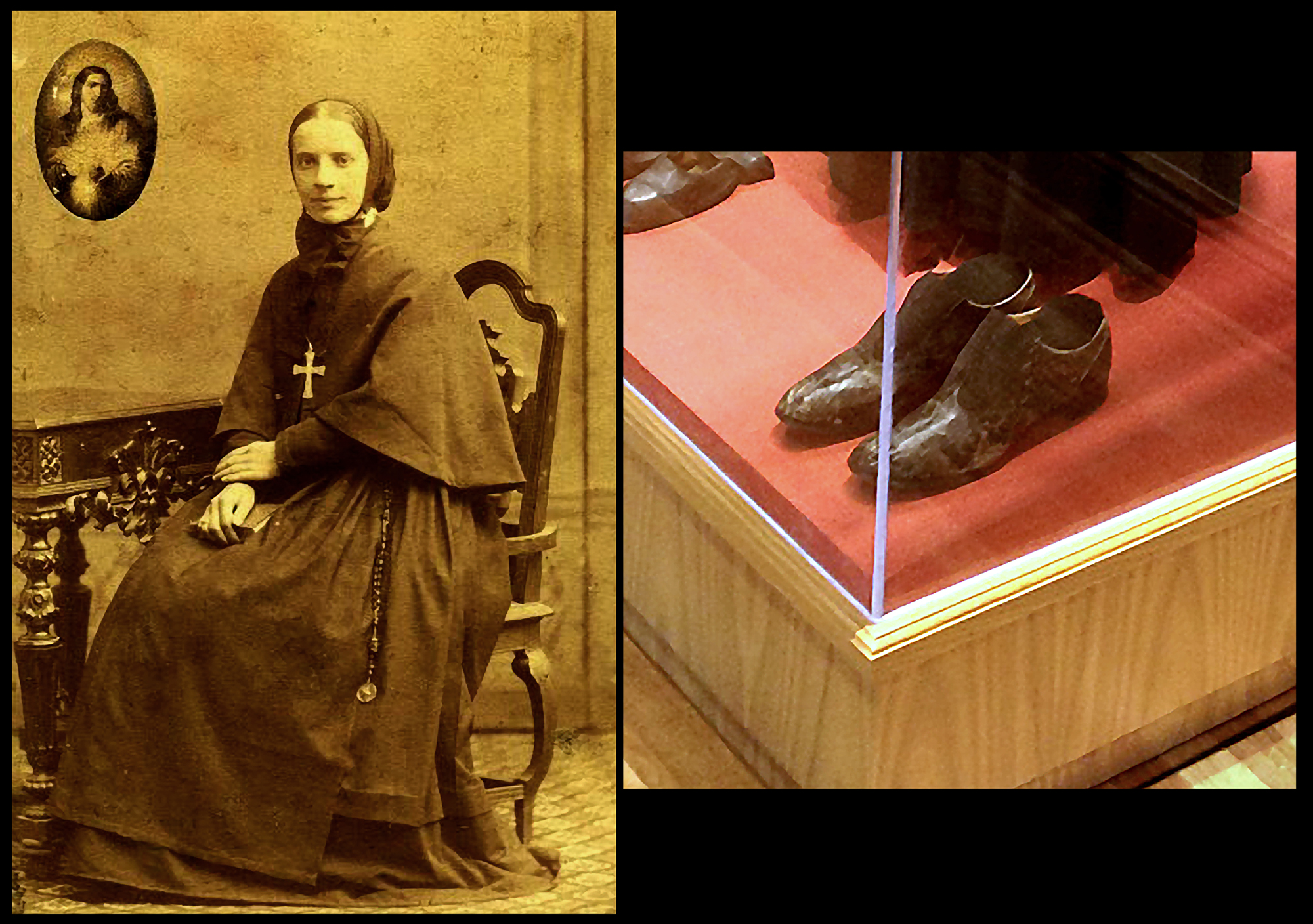
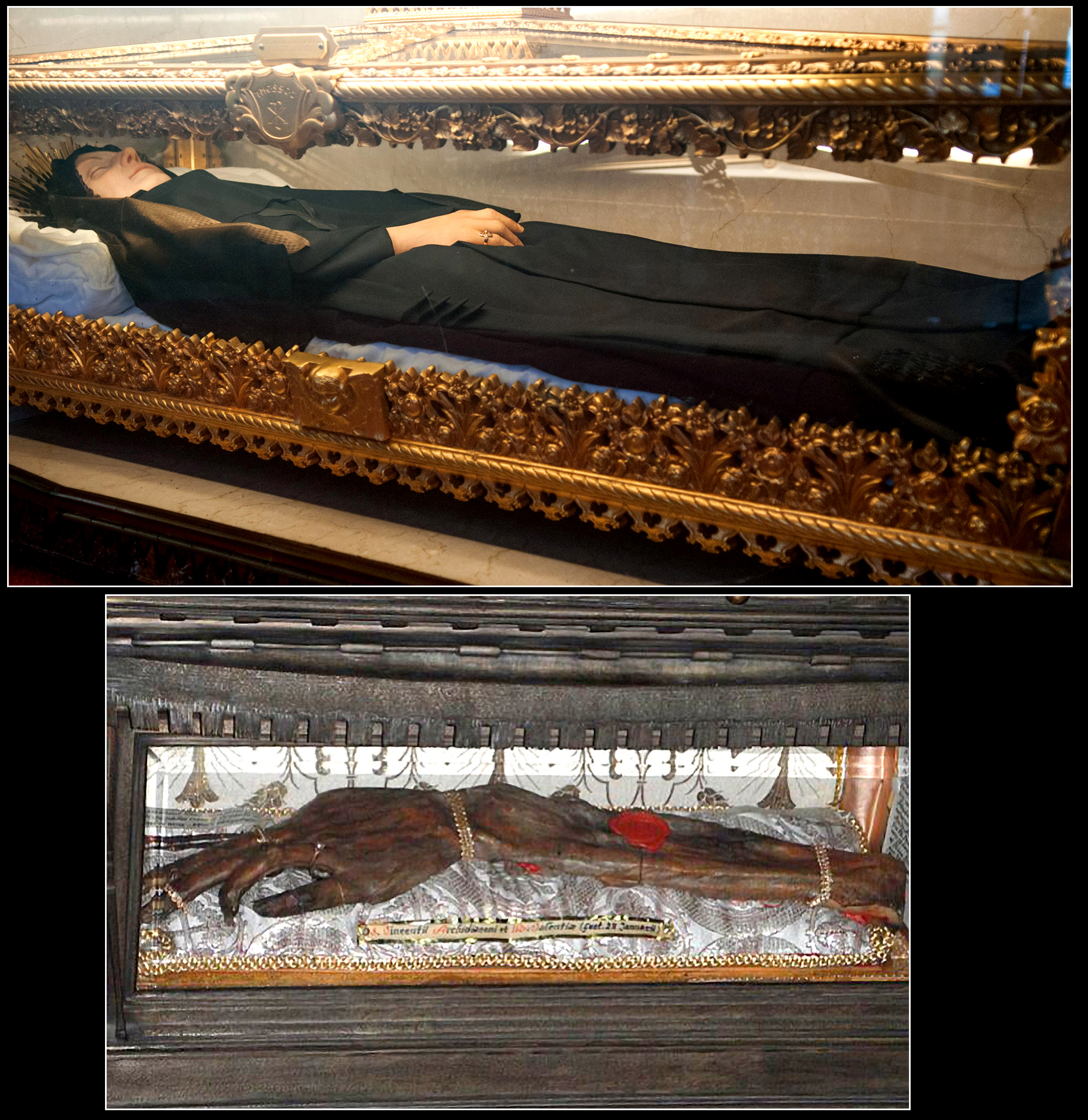
At the beginning of the century, violence and gang shootings convulsed this area during Prohibition. Alcohol was a daily part of Italian life and culture and the uncontrollable events during prohibition doubtless influenced Italian involvement in organized crime. When something of such a daily commonality all of a sudden became illegal, they didn’t understand why, nor were they willing to give it up. Denver’s Little Italy became a natural hub for the bootlegging industry. Underpaid policemen were an easy bribe to look the other way and the bootleggers thrived. When the Lou Blonger Gang was smashed in 1922, bootleggers fought each other until the Mafia openly took over in the late 1920’s as the heart of organized crime. With the vacuum left by the Blonger Gang, violence only increased. Several kingpins were openly gunned down in the streets. Assassinations and revenge between police and bootleggers was like the Wild West at times. In 1919, one police shoot out resulted in the death of a young Italian man from this neighborhood and 5,000 Italians marched on city hall decrying police brutality.
By the 1930’s, stories of executions and even massacres came out of the Denver Costa Nostra. It’s head kingpin, Joe Roma, just lived a block from here and drove around in an armored car. One evening he was in his living room, sitting in his soft, stuffed, velveteen chair next to the piano, practicing Italian music on his mandolin. The music (most likely the theme to The Godfather) was abruptly disrupted by the sound of a bullet exploding out of a .38 revolver. He was assassinated dead on the spot – with seven bullets, six in the head. Joe was also known as “Little Caesar” and as his name implies, was destined to a bloody end.
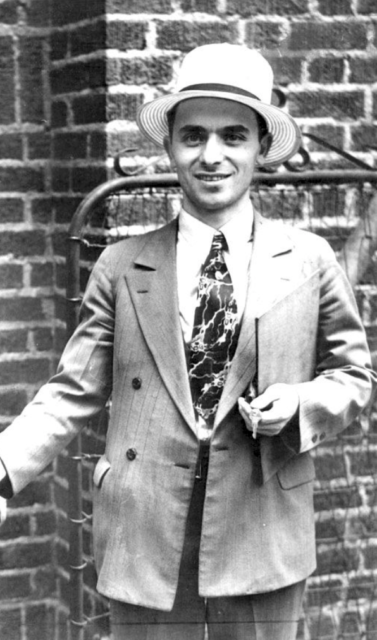
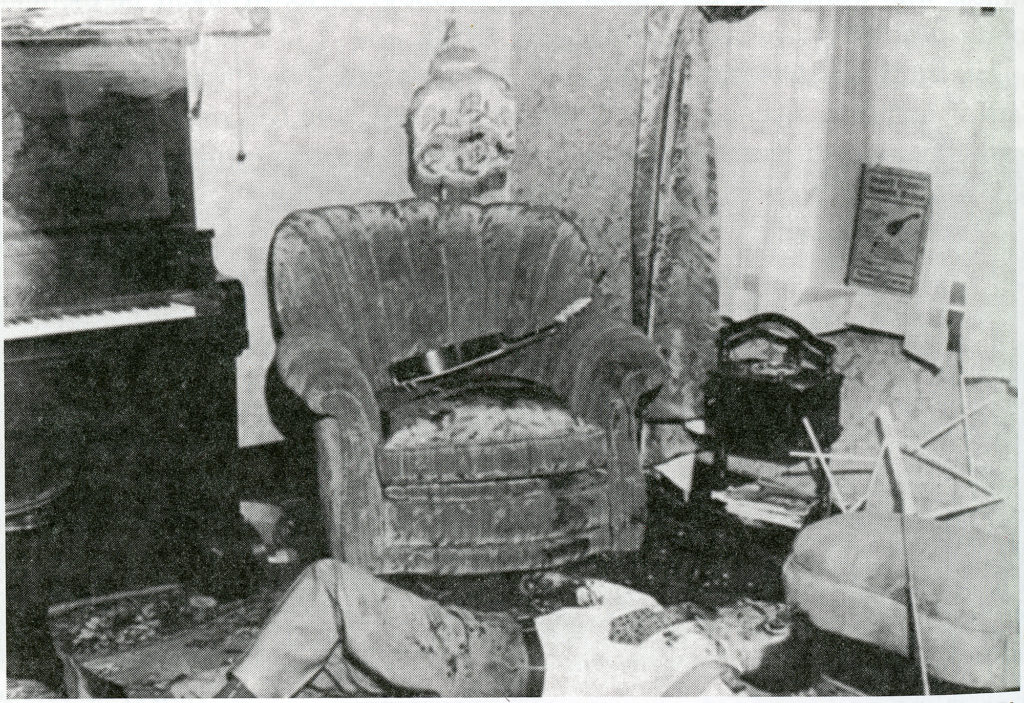
Joe Roma, the kingpin of north Denver’s organized crime, was murdered in his home at 3504 Navajo Street on February 18, 1933 while practicing the mandolin.
Photo of his bloody body on the floor beneath his mandolin (crime scene photo taken by the Denver Police Department)
(Looks like he used a music stand for sheet music and had a poster of a mandolin on the wall.)
Trivia: Joe Roma (AKA “Little” Caesar) and Mother Cabrini were both 5’1″.
Joe Roma’s killer was never prosecuted, but with his death the Smaldone family were the undisputed kings of the Italian mob and ruled north Denver from the 1930’s all the way through the 1970’s. There is much history to be found on the Smaldone family. Some of the scenes from the Netflix series The Soprano’s were based on actual history from the Smaldone family as well as the wedding scene in the movie The Godfather.
Brothers Clyde and Checkers Smaldone (born a couple blocks away from my house in 1906 and 1910 respectively), were the oldest sons of immigrants from Italy. As teenagers, they would steal illicit booze from the bootlegger’s stashes and sold their goods to speakeasies. They later graduated into making their own liquor, then smuggled whiskey in from Canada, and finally just bought their booze directly from Al Capone out of Chicago. They owned and ran the operations for their mob empire out of Gaetano’s Italian Restaurant – “Gaetano” is the Italian equivalent of “Clyde”. It was the neighborhood restaurant where their mother cooked the food. Clyde could usually be found seated at “his” place at the bar, furthest from the door, dressed immaculately in expensive suits with the look punctuated by an ever-present cigar. He was an intellect with a knack for making friends, whether with neighbors, Mafia kings like Al Capone, or Colorado Governor Ralph Carr. Aside from organized crime, the Smaldones had a generous reputation for helping the destitute with food, secretly paying college tuition for local boys, and funding Mother Cabrini’s orphanage. Clyde was the brain of the business and did not include such things as prostitution in his business plan. He said once, “If you are going to be in crime, be in a business that does not promote public wrath.” People liked being close to these mob guys.

After prohibition ended, they ran gambling rackets, loan sharking, and were the founders of the gambling industry in Central City. Despite some of the people associated with them dying very violent deaths, and gambling being illegal at the time, Clyde’s charm persuaded the law to look the other way. As a token of his thanks to the authorities, the Smaldones paid for new waterlines in Central City, restored dilapidated houses, and funded a school lunch program. They stayed in power despite their years spent in Canyon City State Penitentiary on various charges and then serving 12 years in Leavenworth. During their later sentence, Chauncey, the youngest and handsomest Smaldone brother, took over the family business with the help of their nephew “Fat Paulie”.
Gaetano’s restaurant is still around serving Italian cuisine with the motto “Italian to Die For”. You can still order the historic “Chauncey burger” from the menu – a half-pound of ground chuck, melted mozzarella and roasted Italian peppers, served with a side of the house red sauce.
About ten years ago, one of the Smaldone houses down the block was sold to a young couple. When they were remodeling the kitchen, they ripped out the backsplash tiles under the cabinets and a curious feature caught their eye. Behind the tiles, a 1/4” trough had been carved into the grout leading to a hidden hollow in the wall, nesting a safe-like box next to the back door. The hollowed pathway was filled with wooden match heads, embedded and piled on each other. This match-fuse led all the way to the box. We surmised that the box was also filled with match heads ready to implode and incinerate any contents in the box as the arson fled out the back door. Another find in the same house was a hidden basement room behind a concrete wall. Vestiges from that era still arouse the imagination – especially when the church has its annual festival bringing the Italian history of the neighborhood back to life.
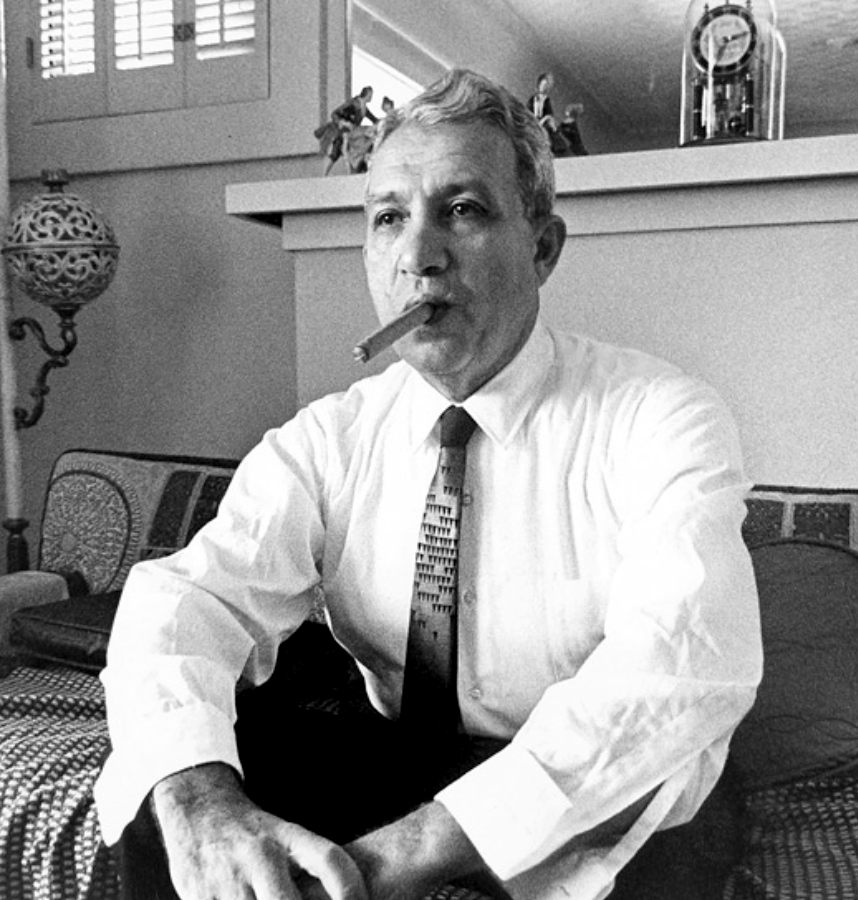

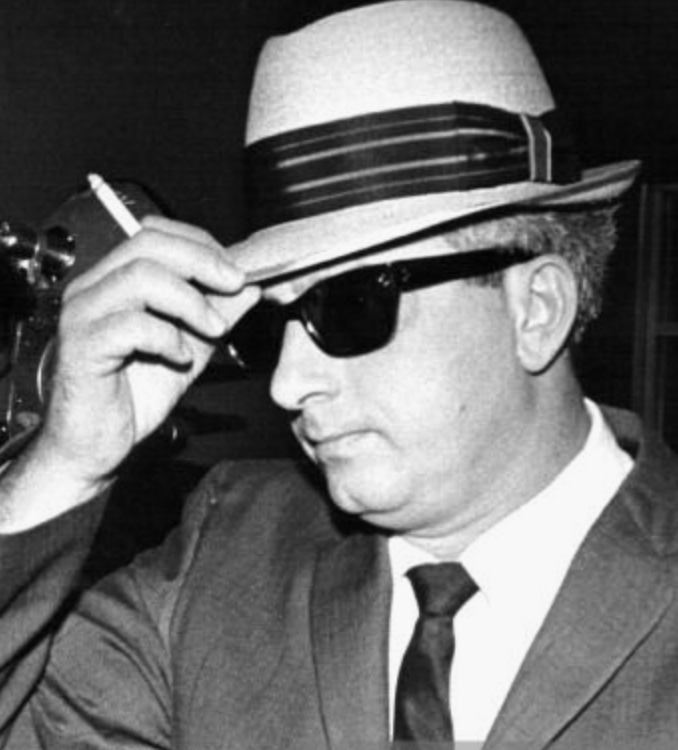
My house was originally built around 1890. Our location here, between Navajo and Osage on 36th, was the epicenter of Denver’s Italian culture. At first the building was occupied by a single Maranzino brother. He ran a private bathhouse and brothel out of here called the Mineral Water Vapor Baths. In the early 1900’s the family brought the Maranzino grandmother over from Italy to live here. She was the undisputed matriarch of the family and ordered the closing of the brothel. During the 1920’s Prohibition however, the Italians love of wine and spirits did not falter and this house functioned as an underground speakeasy.
In the early 1950’s, the father of this household, Ernie Maranzino, was a well-known state representative and opened Denver’s first TV repair shop out of the first floor. Sometimes the funerals next door are not very well attended, but when Ernie passed in 1995, people showed up in record number; complete with a new Jaguar blocking my drive and bagpipers rehearsing Amazing Grace outside my kitchen window. For quite awhile I kept a “Maranzino altar” in the basement from various things they had left behind; the arrangement included heavy print curtains, a signed picture from the Pope, high school graduation pictures, Ernie’s girlie calendar from the 50’s, a number of empty TV consoles and the front page of the Denver Post on the day the Japanese bombed Pearl Harbor. Along with the Mafioso history around here, came a legend of buried treasure in this house. Before Ernie moved out in the 1980’s, he pick-axed out an oak floor in the basement in search of this treasure… but the treasure was never found. More recently a wall was also torn into looking for this legend… to no avail. Hopefully later, the treasure will show up and become an addendum to this blog series.
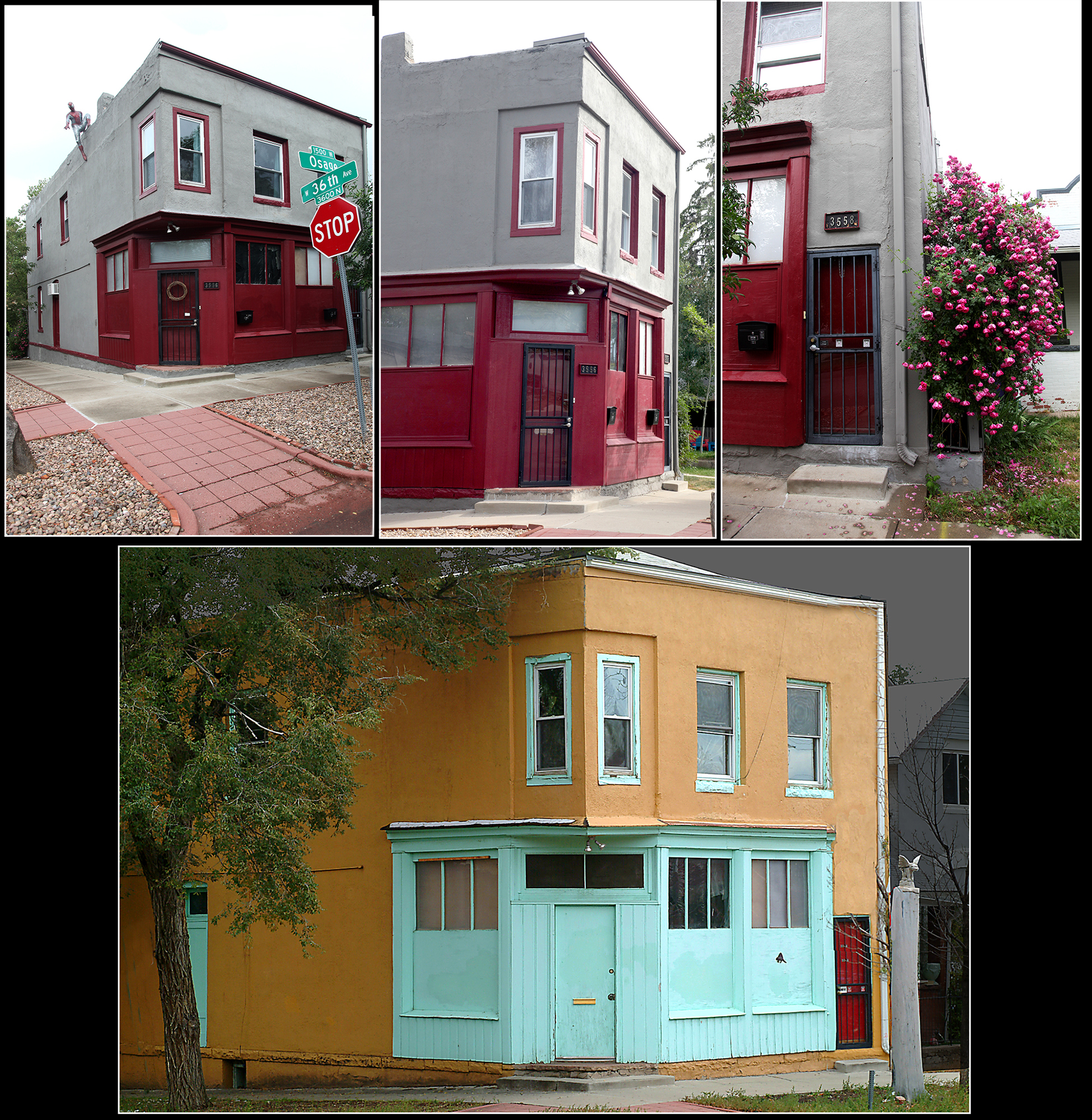
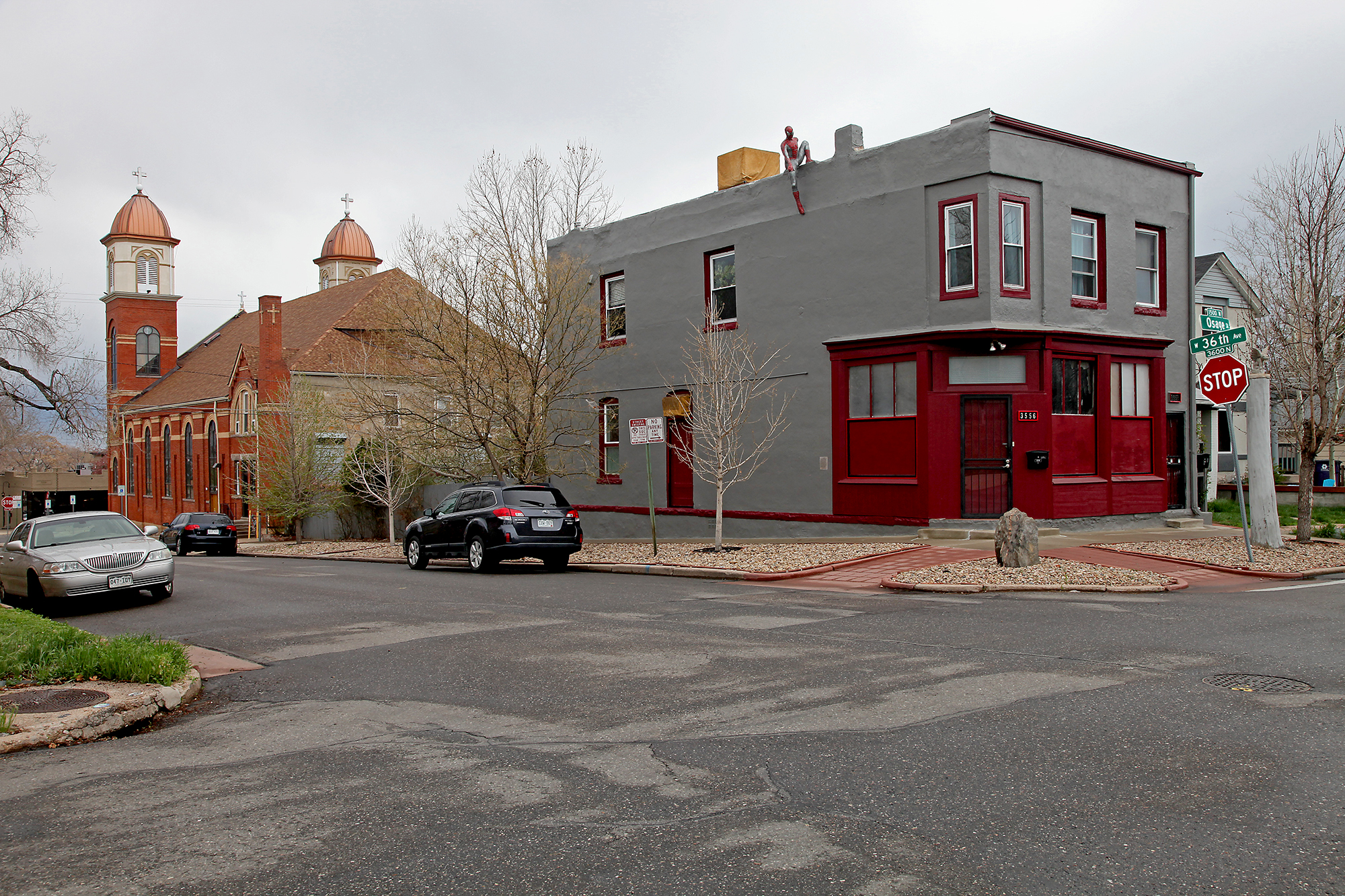
By the 1950’s and 60’s, the Chicano population was moving in at the same time as many of the younger Italians were growing up and moving out. They faced some of the same prejudices and difficulties the Italians faced years ago. It was also post World War II and there were a few “Japanese war brides” who were integrated into the neighborhood as the diversity began to increase. It was an era of uneasy transition. A couple blocks down from the Mt. Carmel Church, the vibrant Lady of Guadalupe Church was first built in 1936; with its present structure completed in 1947. This church builds pride and knowledge of Mexican culture and heritage which is passed on to the youth of their community. The congregations of both these Catholic churches have remained quite homogeneous to themselves with unofficial “closed door” policies. It has always felt like an uneasy coexistence and acquiescence, void of any cultural interaction. At this time, these are the two active churches of the neighborhood and to this day, both have their annual street festivals. Both churches also have a number of ethnic-pride parades each year in which they march and stake their territory. Although the diversity between the churches is not confrontational, I did observe that the day following Trump’s victory, Mount Carmel hung American flag decoration on the church which I had not seen before, in apparent celebration. Our Lady of Guadalupe, on the other hand, is a Mexican immigrant-based community. On that same morning, fresh graffiti was painted on a nearby house under construction stating “Trump lives here” – probably not accurate in innuendo but definitely expressing political anger, venting on the people of no-color that are taking over and the rise of “gentrification” in North Denver.

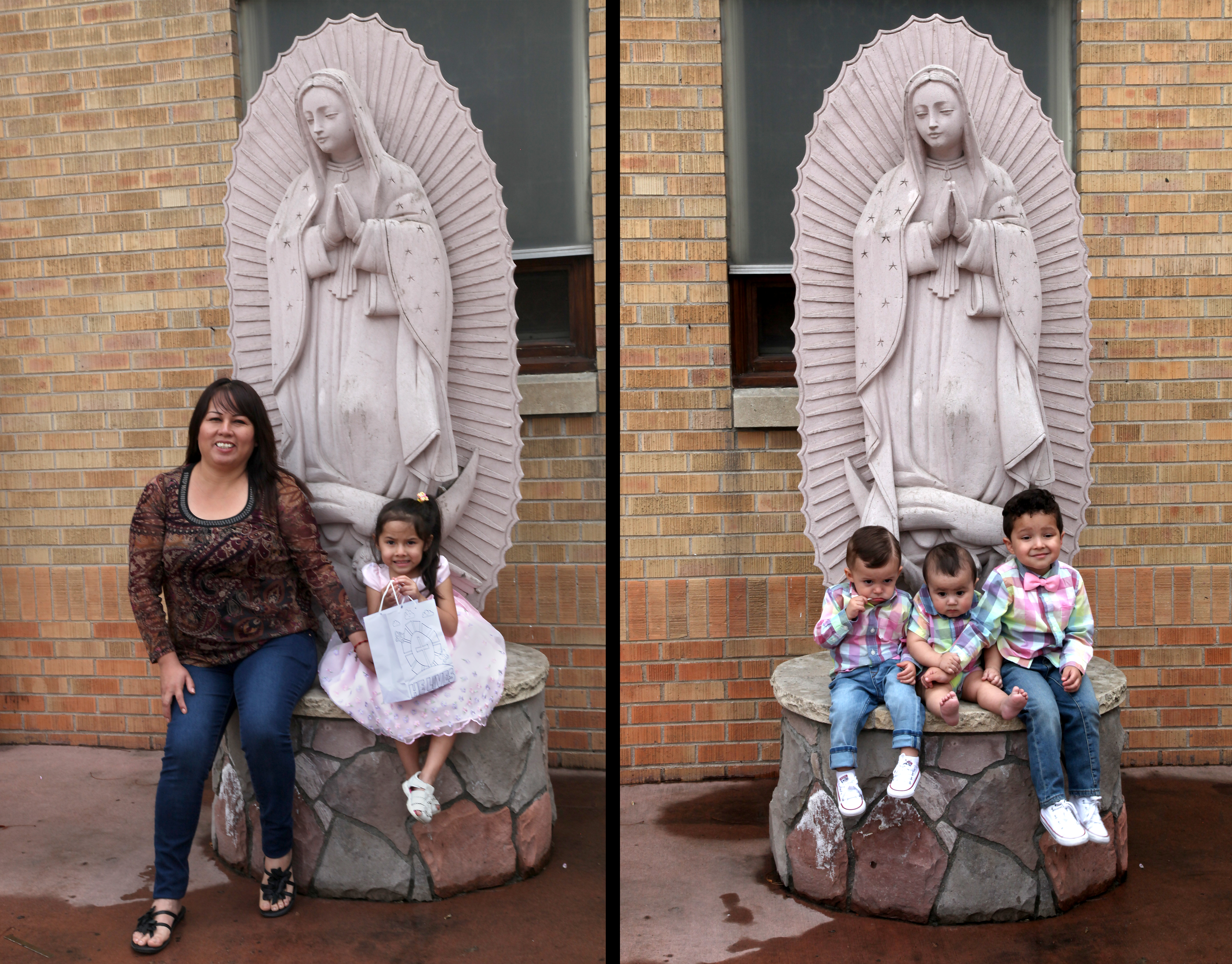
The Mount Carmel parade includes black-suited men in sunglasses carrying the statue of a saint covered with pinned money; followed by angel-winged children singing in Italian and carrying the flags of Italy, Mt. Carmel and the United States. This is followed by a John Sousa band complete with tuba. Their annual Feast of Saint Rocco includes gambling for gallons of olive oil, home-baked pies and giant, phallic pepperonis; this is accompanied by live renditions of the most beloved Frank Sinatra and Tony Bennett tunes that waft through my backyard. This festival is well promoted through the Catholic register of Denver and the sidewalks are packed with festive crowds coming and going. When I first moved here, the trucks and cars would park three deep on my property – taking up the sidewalk, easement property and street parking. I would have to put up huge signs, rope off access to my drive, put irate notes on cars and eventually resort to writing on car windows with soap. With the street closed off in front of the church, the rerouted buses always have difficulty trying to turn the tight corner – with illegally parked cars – and often end up stuck, having to abandon passengers. With my car having been brutally crashed into twice, I park in my backyard. But over the years, I have learned to just batten down the hatch for the weekend, prepare for a siege-like invasion and enjoy it. Weather and prayers pending, the church’s survival for the year depends on this three-day event.
In contrast, the Lady of Guadalupe Church parade goes past my house with dazzling Aztec dancers accompanied by drummers and sombrero-clad horsemen exhibiting amazing lasso rope skills. Their annual festival has similar strategies with a different cultural twist on the music and food. Presently Our Lady of Guadalupe Church boasts a congregation of over 3,000 and is an energetic and dedicated center of social life for its community.
below: Our Lady of Guadalupe has at least six parades a year. In this one, there are rose-petal refueling stations, set up every three blocks, to refill the girls baskets as they sprinkle a path of rose petals 50 blocks long through the neighborhood.
below: These images show some sections of the early December parade from Our Lady of Guadalupe church.
In the early 1990’s, Martha Keating and Bob Luna were awarded a public art commission to create a series of 10 epic mosaic murals. These murals are located on the highway sound barrier that runs down the entire east side of this neighborhood. These panels document the neighborhood’s history from prehistoric times through the future. Featured here is the panel that depicts the neighborhood churches.
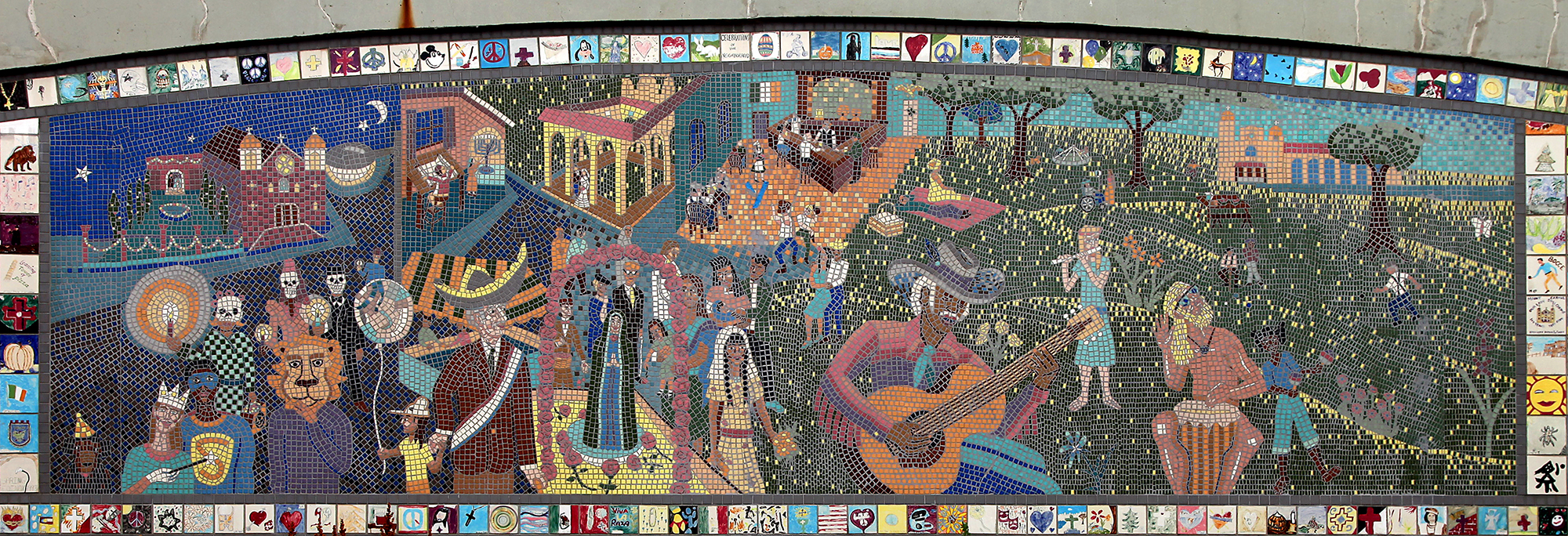

If you liked this blog, please share and get others to subscribe to this website




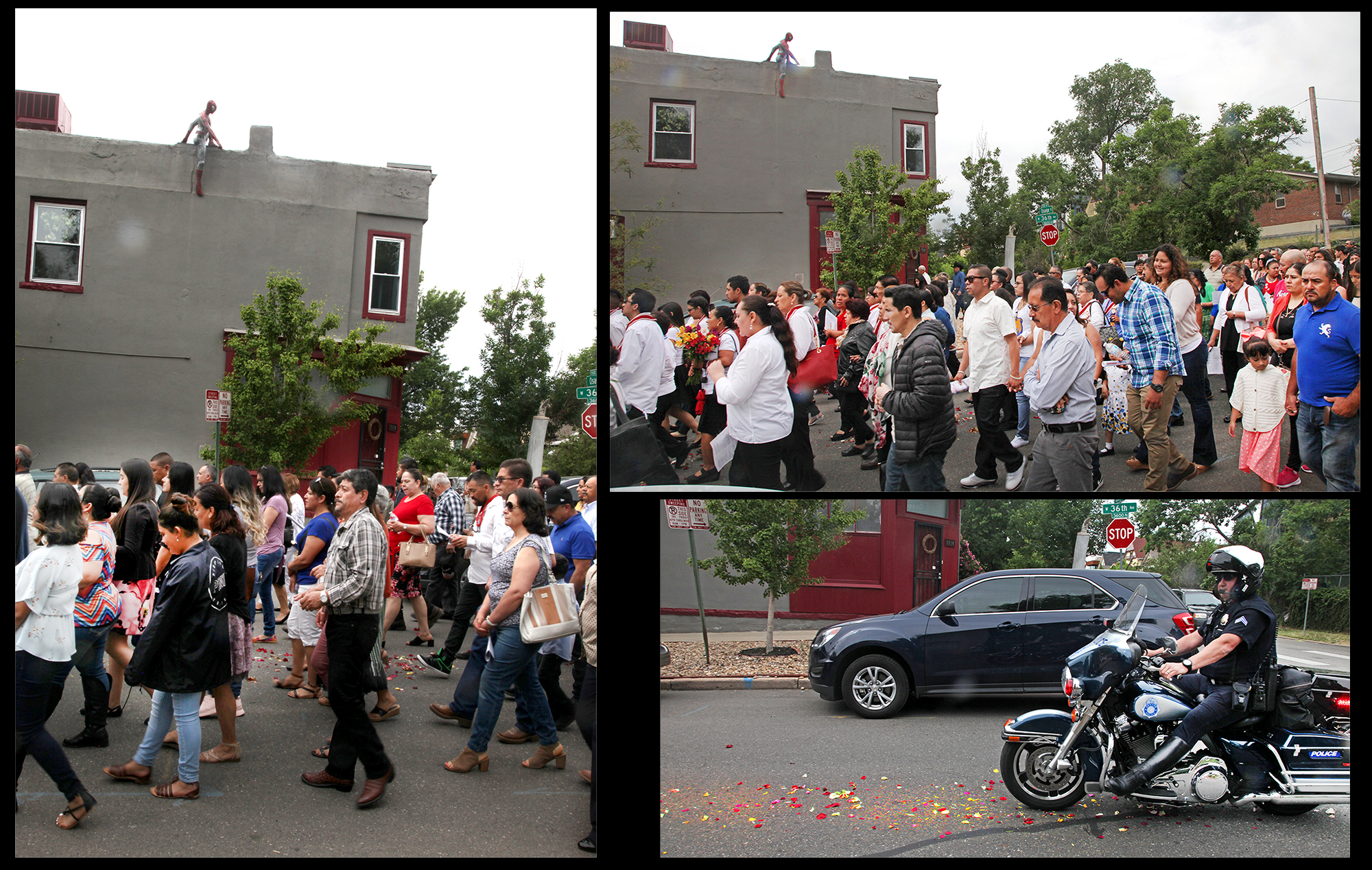
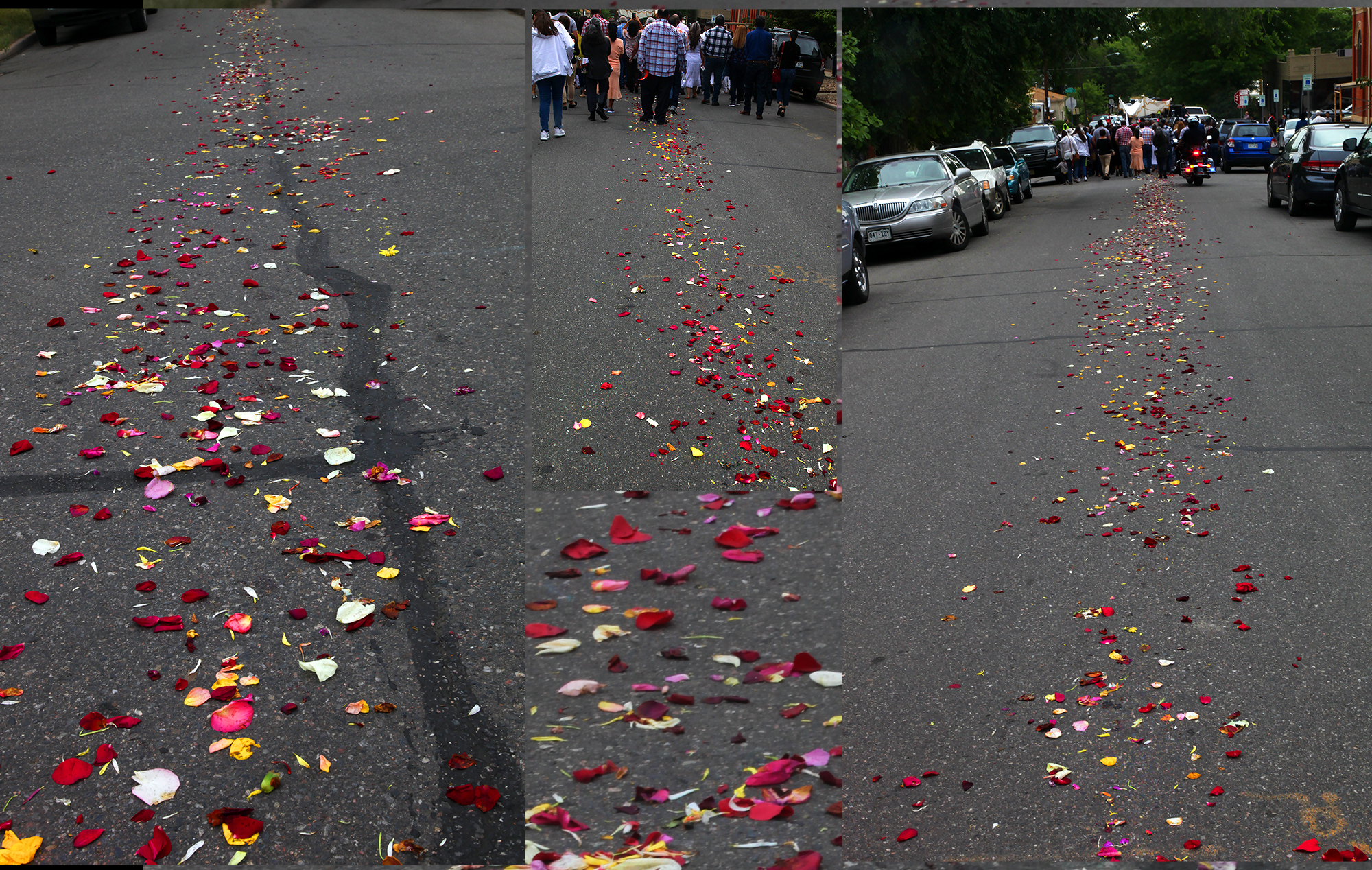





























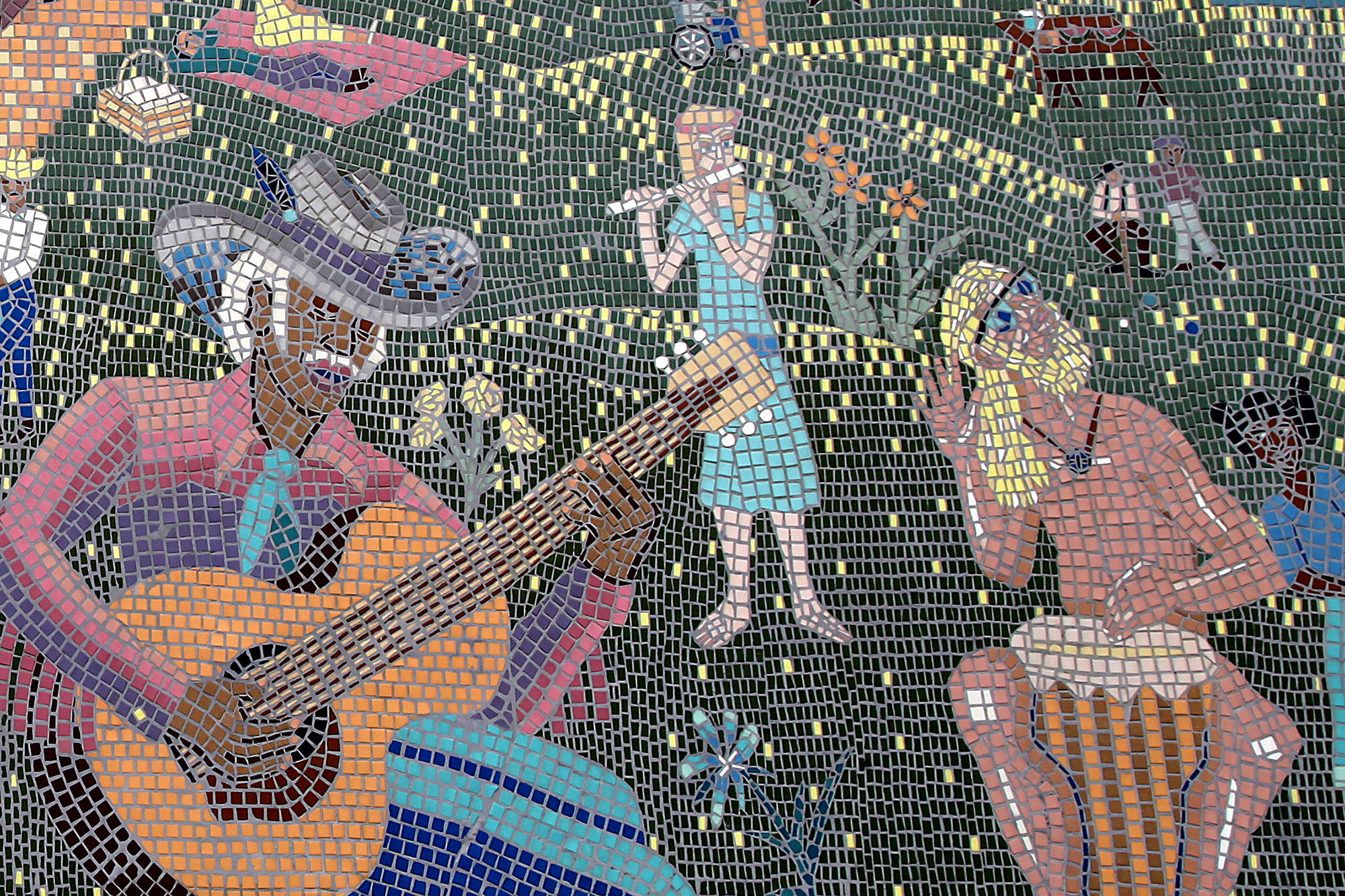
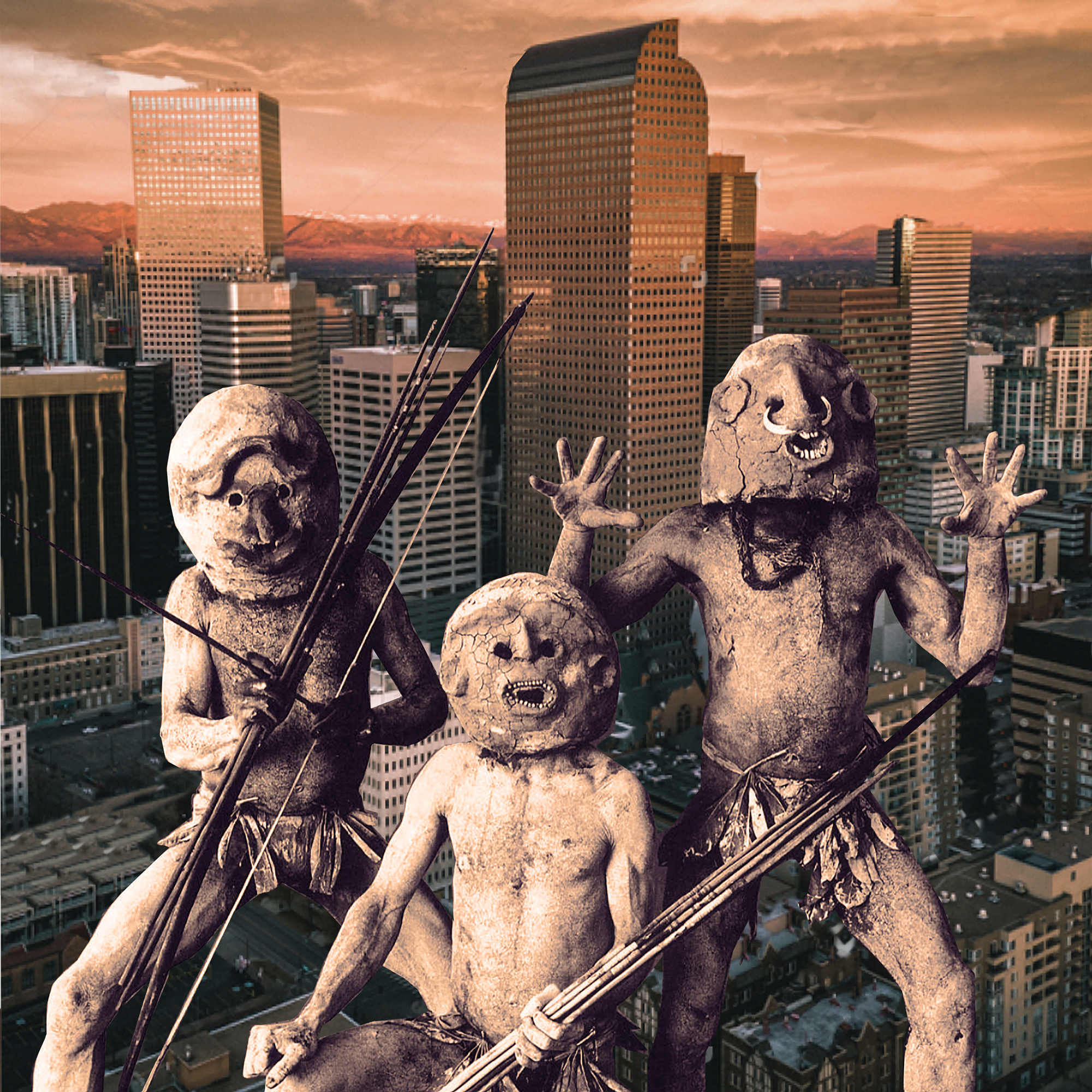
Arlette
Loved it!
Dave Benson
Great history of a fascinating neighborhood!
Patty Martin
This is absolutely spectacular. Well done, John!
Karen Roehl
Wow! What in depth and interesting coverage!! THANK YOU, John for sharing!!!
Reed
Hey John,
Thanks for doing this. I am looking forward to your next installment! Hooray for North Denver!
Jan Johnson
Thank you so much ! The Northside (as we always called it) was our home for many years. Spawning a great early independent art scene, it was and in many ways still is, my spiritual home. Love the history and pictures-deeply grateful.
Perry Ragouzis
Thanks for sharing John . . . I’m looking forward to future coverage and comments.
Jonathan Kaplan
Nice history John. Thank you!!
Daniel Hershberger
Talk about neighborhood appreciation! Makes me want to come over right now at 10 PM and walk around your block in the snow. Fascinating history and very well told. Thank you, John.
tim flynn
Hi John. Great job!
I moved to Colorado in 1988 and first started hanging around the famed 37th and Navajo corner in the 90s. I now live back in Chicagoland and miss the “old days”. I’ve always enjoyed the stories, history and lore that surrounded the area . It was an adventure as it was a rough neighborhood back then. I also enjoyed visiting your photography studio to get slides of my artwork. It was a very cool and interesting space. Here’s to those days of the 37th and Navajo gallery corner and all of the artists and patrons that made it so great!!!
Dominique Hershberger
Awesome storytelling! Thank you John!
Terry Lukas
Thanks for telling the story of your colorful neighborhood and its changing cast of characters. I feel as if I was there for the parade with its blaring music and dazzling costumes — and the just as well-dressed lone street cleaner. Your house makes a great backdrop for all the action.
Rupert Jenkins
Well done, John. You are an inspiration! Poor Mother Cabrini – it’s rather hideous that she was dismembered and scattered like that.
Bob Smith
Fun and interestng stuff, John. I am thoroughly enjoying the saga.
Barbara Hoffman
Well done! Love the history, stories and pictures. Your writing makes it feel so alive.
Mary Cay
Thanks so much John for this in-depth blog on your hood. It’s refreshing to get the details on those familiar names and places from Denver’s past. Your new website is beautiful but I wouldn’t expect anything less from you. Looking forward to the second part of the series. I have fond memories of taking work to your studio for slides and seeing all of your oddities.
Kathryn
If we all could help preserve Denver’s rowdy history- before it disappears into ‘progress smacking of development’ memory, then our stories can be retold. Your hard work is appreciated John!
Sharon Brown
John, you are a wonder! This is fascinating and so well written
Marcia Ward
John I enjoyed your first installment and look forward to all that is to come. Very well written and I love the way you are intertwining the past and present, the photos and writing. Thanks for the most interesting work.
Lin Hark
Great historic information and photos of your hood! I look forward to the rest of your blog stories. I’m also anxious to ride my bike around the neighborhood since the last time was during pre spiderman time.
Cher Ross
John this was a very interesting story of the neighborhood. I grew up in Capitol Hill, but what brought me to this website was Bob Luna. I knew Bob for many years, then moved to California in 1974 and lost track of him. I recently got to thinking of him, did some digging and your articles caught my eye. I was happy to see that his life was full and that his creativity was allowed to bloom to full capacity. What a wonderful legacy to leave behind for his family. Thank you for the read!
Richard Harrison-Atlas
Such colorful stories. Thanks for sharing them. My son bought a house on Lookout Mountain and has a clear view of the shrine of Mother Cabrini. Wonderful to read your take on her connection to the hood.
tamsen
This was fascinating, and so well-written! I really enjoyed it, and I’m looking forward to catching up on further chapters.